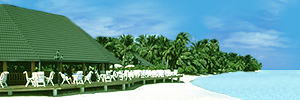



|
 |
 |
|
The Canadian Political System
The Canadian political system as it is known today was first drafted by the "Fathers of Confederation" at the Quebec conference of 1864. This then became law when the constitution act was passed in 1867. This act gave the formal executive authority to Queen Victoria (Queen of Great Britain) which made Canada a sovereign democracy. The Canadian political system is therefore loosely based on the British system. Now, Canada is an independent Federal state with the Queen still the head of state. Her powers are extremely limited however, as the Parliament passes the laws which the Queen gives the "Royal Assent" as the final step. The Governor General of Canada is the Queens representative in Canada and carries out all the Royal obligations when the Queen is not in Canada. The Governor is always a Canadian chosen by the Queen on the advice of the Prime Minister. The length of office is normally five years for the Governor General. The Houses of Parliament (housing
the Federal Government) are located in Canada's capital
city, Ottawa. There are 3 main sections to the Canadian
Parliament. The Queen as the Head of state; the Senate
(appointed on the Prime Minister's recommendations)
and the elected House of Commons. The Senate The Senate is made up of 105 Senators who are appointed by the Governor General on the recommendation of the Prime Minister. These Senators are men and women from all of the Provinces and from a wide variety of backgrounds. They can serve on the Senate up until age 75 and have to be a Canadian citizen, over age 30, own $4,000 of equity in land in their home Province, have over $4,000 as personal net worth and live in the province represented. Each Province or Territory has a set number of Senators - 24 each from the Maritimes, Quebec and Ontario, 6 each from Alberta, BC, Manitoba and Saskatchewan, 6 from Newfoundland and Labrador and a further 1 each from the three Territories. The main role of the Senate is to read over and examine the "Bills" sent from the House of Commons though they can also initiate Bills. This process ensures that no rogue bills will become law, though only rarely do the Senate reject a Bill - sending it back to the House for amendment. The Bills are subjected to the full legislative process by the Senate and if passed will be given to the Governor General for Royal Assent and thus become Law. House of Commons The real power is held by the House of Commons. Here, the members of Parliament (MP's) are elected by the general public during a Federal election - normally every 5 years. The country is split up into constituencies (total 308 by population size) and whichever candidate has the most votes wins the right to represent that constituency and take their "seat" in the Parliament. Each Most candidates represent a particular political party and the party with the most "seats" takes over as the Government. The main parties in Canada are Paul Martins Liberals (ruling), Stephen Harpers Conservatives, Jack Layton's New Democratic Party, The Bloc Quebecois and The Green Party to name the largest. The leader of the political party that wins the election becomes the Prime Minister of Canada (currently Paul Martin of the Liberals). The Prime Minister effectively runs the country with the support and advice of his Cabinet. The Cabinet is made up of "Ministers" chosen by the Prime Minister to be responsible for certain areas of the Government. There are ministers of Health, Finance, Defence and Immigration to name a few. These areas of responsibility are called "Portfolio's" and each minister will have a large team of civil servants (normally the experts in that field) working for him/her. Only the ministers change during an election - not the civil servants. Though the MP's represent their local constituency, their main duties are debating the laws to be made and, depending on their Party, either supporting or opposing the Government. The opposition is the political party with the second most seats in the House and their main job is to hold the government accountable for their decisions. A Government with a lot of seats in the House will be strong and able to pass most laws they want through Parliament. Conversely, a weak Government (such as now) doesn't have the majority of the seats and has to rely on the support of another party to form an effective Government. After each election, the Senate and the House of Commons either elect (House) or appoint (Senate) a Speaker. The Speaker is in charge of proceedings and has to be impartial, enforcing the rules of the House/Senate during debates and votes. The Speaker presides over the House from a raised chair with the Government MP's om the right and the opposition on the Left. Making the Laws To start with, the House of Commons
members introduce a "Bill" (legislative
proposal). The details of the Bill are read in the
House without debate and then the Bill is printed
(the first reading). A committee will listen to testimony,
examine the Bill and then submits a report to the
House recommending it as it is, with amendments or
scrapped. From here it goes to the report stage. The Senate put the Bill through the same process as the House - if it comes through all that (normally does!) it is given Royal Assent and becomes Canadian Law! For more detailed information go to http://www.onestopimmigration-canada.com/canadian_political_system.html About the Author: The author immigrated to Canada in 2003 and has constructed a free information website http://www.onestopimmigration-canada.com about Canadian Immigration and life in Canada based on his family??ôs experiences. Source: www.isnare.com E-mail this article to your friend! HotelDirectory.ws presents direct links to hotels, apartments, hostels, motels, guesthouses,
self-catering accommodation and more. |